Use the Dynamics 365 Remote Assist mobile app in low-bandwidth situations
Technicians sometimes find themselves on factory floors or remote locations with poor network connectivity. Without strong network connectivity (bandwidth up/down of 1.5 Mbps or higher), technicians might experience difficulty troubleshooting and resolving problems in real time. Microsoft Dynamics 365 Remote Assist mobile gives technicians the ability to discuss, diagnose, and resolve issues with remote collaborators even in low-bandwidth scenarios.
Important
To use the low-bandwidth feature, you must turn on the new Microsoft Teams meeting experience.
What determines poor network connectivity
Poor network connectivity is determined by the following conditions:
The bandwidth is between 150 kbps and 1.5 Mbps
The latency is higher than 1,000 ms
The packet loss is higher than 10 percent
Dynamics 365 Remote Assist mobile autodetects if the technician is experiencing poor network conditions. If so, the technician is prompted to share snapshots with the remote expert to collaborate, instead of transmitting a live video feed. This way, the expert can view and annotate better-quality images, instead of a low-quality video feed.
How it works
Let's take a quick look at what happens in a field scenario when a technician encounters poor network connectivity. In this scenario, the technician is a field worker. The remote expert is elsewhere with good network conditions.
The technician launches a video call with a remote expert.
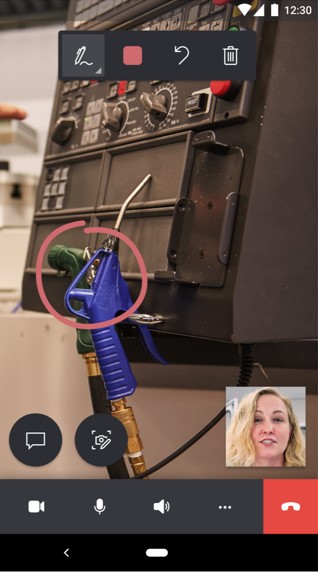
In the call, Dynamics 365 Remote Assist mobile autodetects if the technician is experiencing poor network conditions. If so, the technician is prompted to use the Snapshot tool to share images with the remote expert.
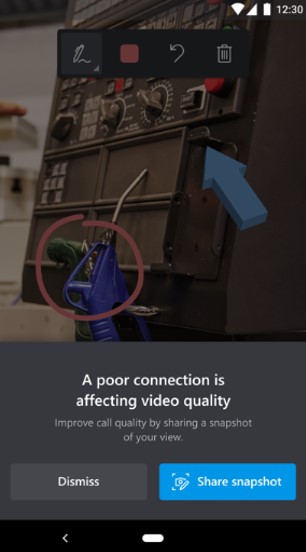
The technician is instructed to use the Snapshot tool.
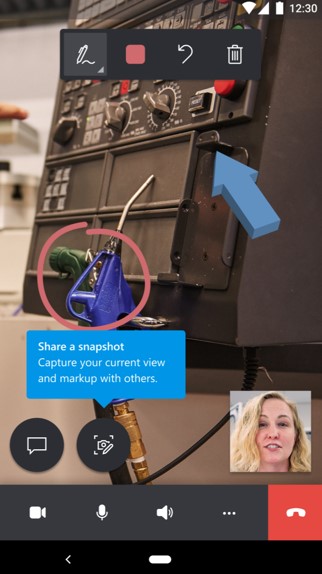
The technician takes a snapshot, which is shared to the remote expert's screen. The expert now sees a high-quality snapshot. The technician and expert can annotate simultaneously on the snapshot.
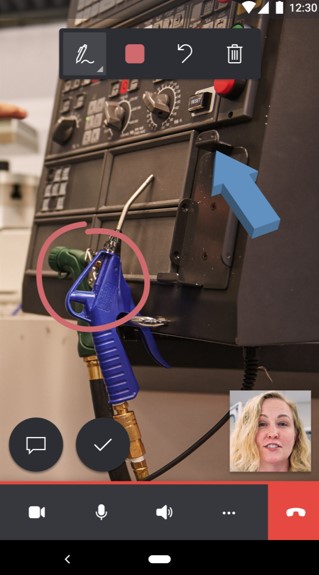
After sharing a snapshot, the technician can save it to the device gallery, call chat, or both.
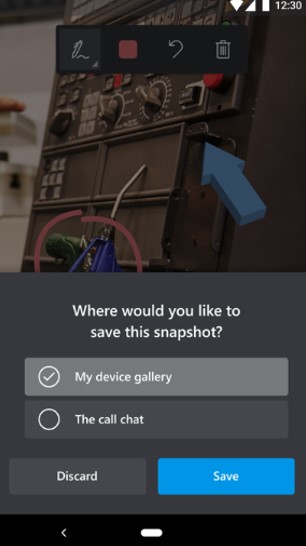
The technician returns to the video call and can continue to send snapshots to the expert.
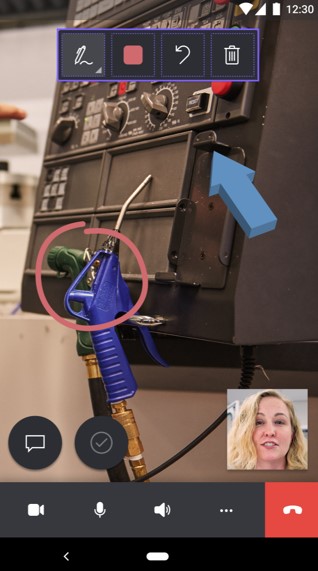
Note
The low-bandwidth feature is not supported in group-calling scenarios.
Feedback
Coming soon: Throughout 2024 we will be phasing out GitHub Issues as the feedback mechanism for content and replacing it with a new feedback system. For more information see: https://aka.ms/ContentUserFeedback.
Submit and view feedback for